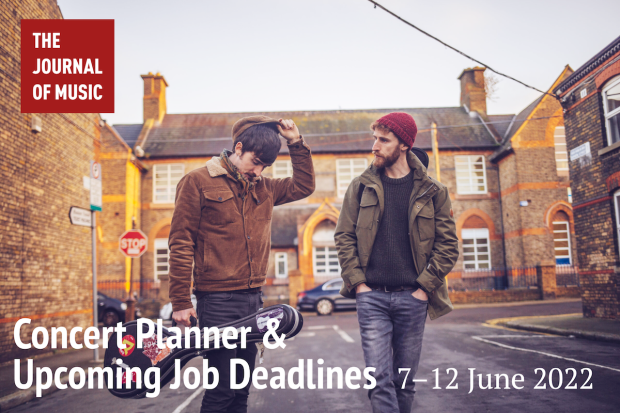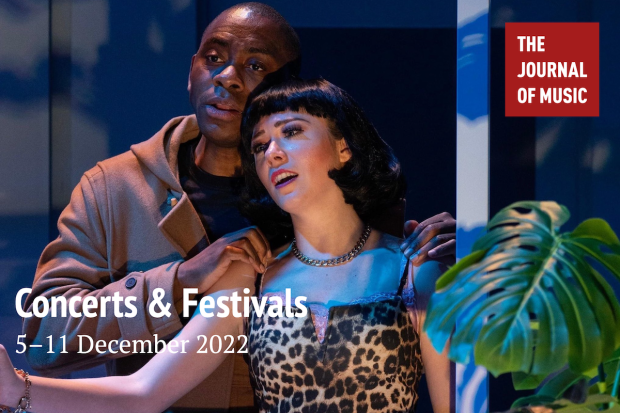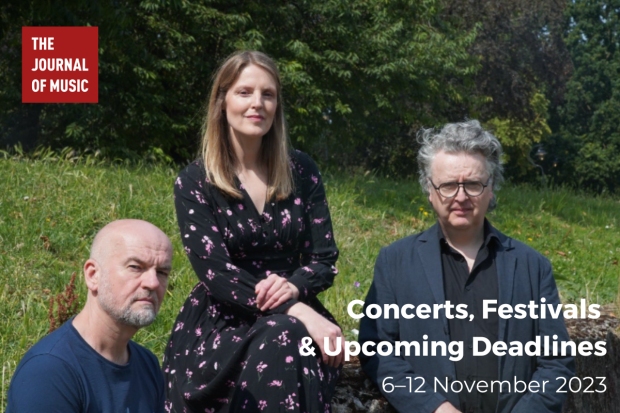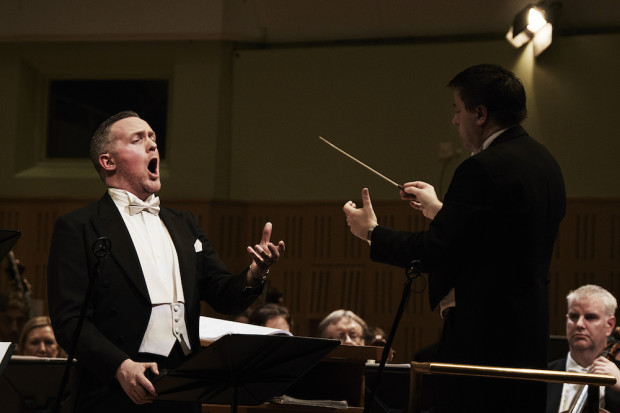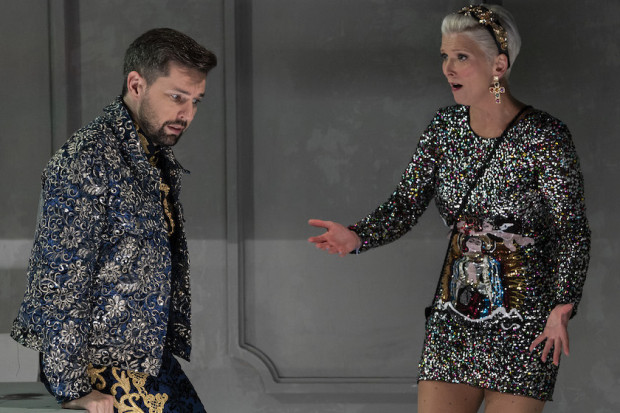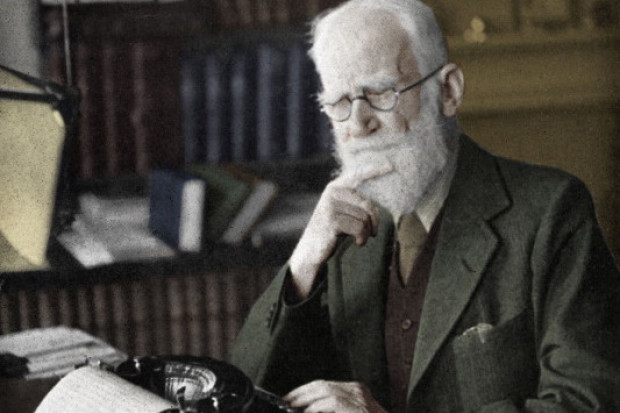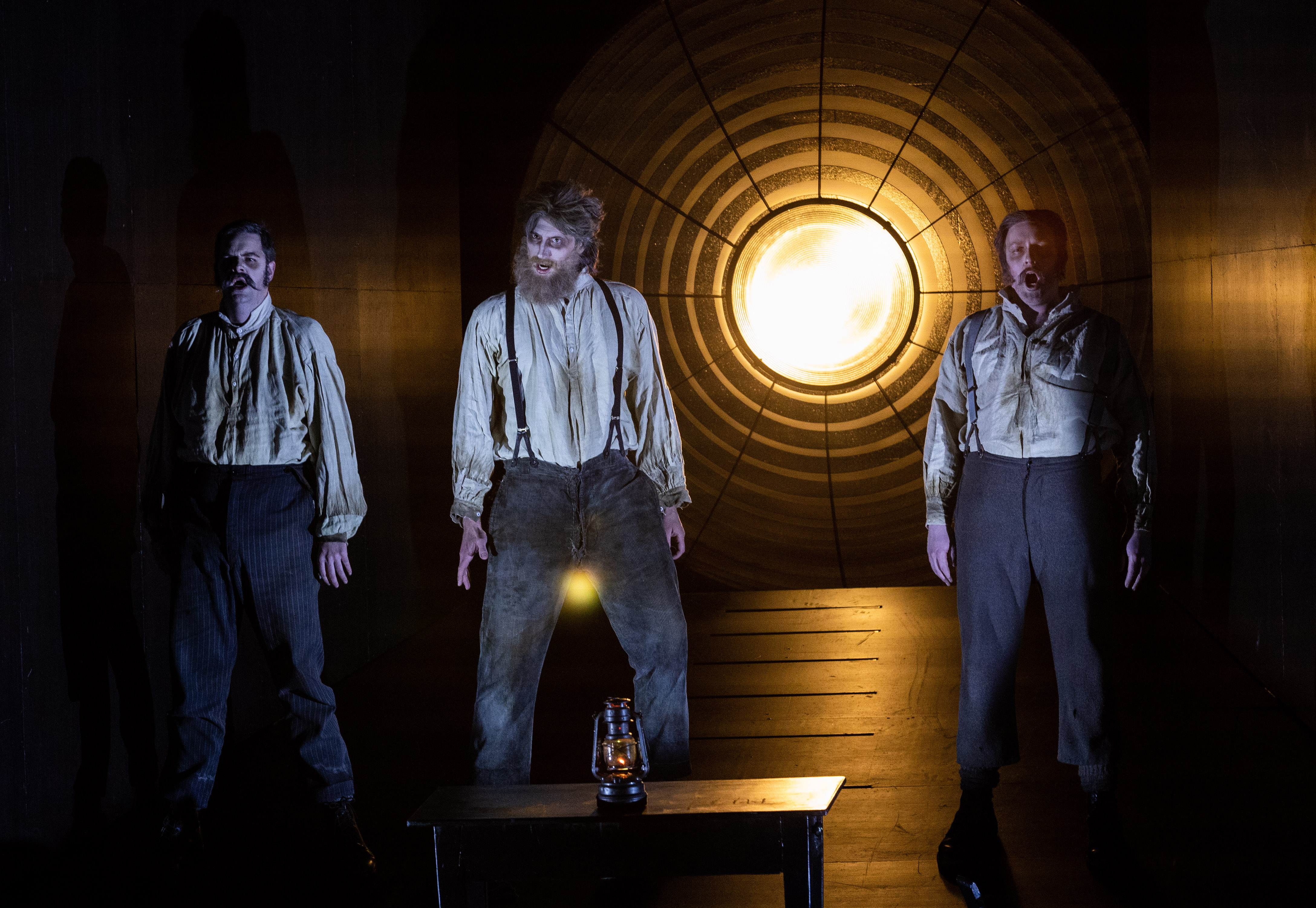
Irish National Opera’s ‘The Lighthouse’ (Photo: Darragh Kane)
Capturing the Darkness and Lightness of Maxwell Davies
There is so much going on in Peter Maxwell Davies’ chamber opera The Lighthouse (1979) that it is perhaps glib to point out that a story about three people marooned together has a particular resonance in Covid times. It is not more about isolation than it is about psychological repression, or the power of weather, or evil, or madness. But the quarantine resonance is there too, and so Irish National Opera’s new production of it (20 November–11 December, nationwide) is timely, even if it might be an opera that is always timely.
The Lighthouse is based on a true story: in 1900, a lighthouse supply ship arrived to the Flannan Isles Lighthouse to find its three lighthouse keepers missing without trace. The official inquiry into the disappearances concluded that the keepers had probably been carried away by a wave while repairing a crane, but Davies leans into the mystery, and into what might have gone on between the keepers marooned by storms long after they were due to be relieved.
The opera is a characteristic work by Davies: rich and ironic, while also broad in its emotional and musical range. (And fortunately it is also entirely without the triteness of some of his work, such as An Orkney Wedding, with Sunrise (1985).) This breadth is often compressed into moments of exquisite tension, as when one of the lighthouse keepers, Blazes (Ben McAteer), breaks into a bawdy autobiographical murder ballad accompanied by fiddle and banjo – only for the guilt of murder to overtake him as the musical dissonance increases.
The musical range also puts further demands on what is already an extremely virtuosic work for both the cast and orchestra, but, as we have come to expect from INO, the performance was superb. The orchestra, under Elaine Kelly (her debut live run with INO), was well-drilled as well as colourful and characterful. The three singers – McAteer is joined by the tenor Gavan Ring and bass John Molloy – sung with rich and clear voices. Ring captured the mock-sweetness of his character’s (Sandy) love song exquisitely, and Molloy gave great evangelising forcefulness to his Bible-bashing Arthur.
Lonely minimalism
As director, Edwina Casey had quite some brief. This production is the same as the film production that was toured around the country over the summer, so she had to find a staging that would work equally well on film and in a theatre. She certainly succeeded in making it work on stage: its lonely minimalism lent itself well to the introspective nature of the material, and also allowed the stage to fit the variety of musical styles that it supported.
In particular, the centrepiece that was the lighthouse’s light was an inspired decision: a simple circle of light, sometimes industrial yellow and sometimes blinding white, it was able to be everything from ambient lighting to a maddeningly bright god-sun. This was set against dark, subdued lighting that captured the spookiness of the plot and the opacity of the characters’ hearts perfectly. When the main light was off, the gloom was delicately set off by occasional dots of colour – such as the soft gold light of the oil lamps – that served more to reveal how dark things are than to actually light anything up. Shade, too, was thematised effectively, with the cast often framed strikingly against bright lights, creating bold shadows and silhouettes. This was again an inspired choice in an opera about losing oneself to the ghosts of one’s past, and Annemarie Woods’ set and costume design, and Sinéad Wallace’s lighting design, also deserve special mention for it.
I only had a few reservations. First, the score occasionally asked for some instruments that INO realised on an electric keyboard – but the keyboard’s emulation was so poor that I had to struggle to work out what the intended instruments were. It was only through contextual cues that I satisfied myself that the keyboard accompanying Sandy’s love song was supposed to be an out-of-tune piano. Second, more could have been done to bring across Davies’ cheeky, irreverent humour and how this manifests in stylistic clashes and juxtapositions. The musical performance was played pretty much straight: the singers’ pitches and rhythms were careful and accurate, but there was little by way of playing with the score. For instance, Blazes’ murder ballad, as well as being written in a mock-folk style, is full of brief moments of dark, bitter pseudo-humour; the score looks to me to be an invitation for the performers to match Davies’ irreverence, or to lean into the singing tradition of folk ballads, but neither opportunity was taken.
However, these reservations are minor. The production was otherwise luminous, capturing both the darkness and the lightness of Davies’ opera, as well as how these opposites fade into one another, and how each is, as it were, always in the shadow (or the reflection) of the other.
The final performance of ‘The Lighthouse’ takes place at An Grianán in Letterkenny this Saturday 11 December. Visit www.irishnationalopera.ie.
Published on 9 December 2021
James Camien McGuiggan studied music in Maynooth University and has a PhD in the philosophy of art from the University of Southampton. He is currently an independent scholar.












